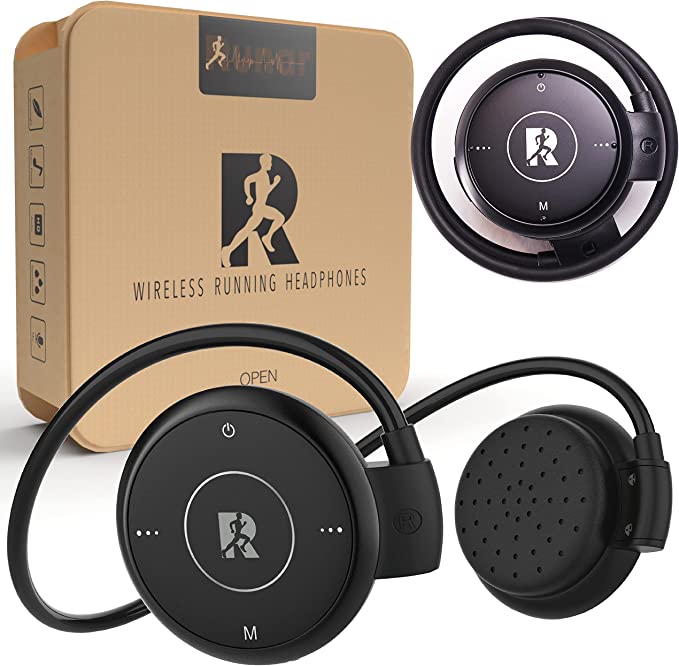The Beginner's Guide to SDR and ATU: Understanding the Xiegu G90
Update on Oct. 29, 2025, 5:13 p.m.
The world of amateur radio, especially on the High-Frequency (HF) bands, holds a special kind of magic. It’s the thrill of capturing a voice from a distant continent, a connection made not through the internet, but through the fundamental forces of physics. For newcomers, however, this world can feel intimidating. The technical terms, the complex equipment, and one particularly notorious hurdle—making antennas work correctly—can seem like a high barrier to entry.
But what if the tools themselves could teach you? What if a new generation of radios could simplify the hardest parts, allowing you to focus on the joy of making contacts? This isn’t just a hypothetical; it’s the reality shaped by two powerful technologies: Software Defined Radio (SDR) and the Automatic Antenna Tuner (ATU).
This guide isn’t a typical product review. Instead, we’re going on an educational journey. We’ll use the Xiegu G90 as our primary example, not to sell it, but to dissect the revolutionary technology packed inside. Our goal is to demystify these concepts, so you can understand how radios like the G90 are making HF more accessible than ever.

The First Revolution: Seeing Radio Waves with SDR
To understand the G90, you first have to understand the paradigm shift that is Software Defined Radio (SDR).
Imagine an old film camera. Every function—the shutter speed, the aperture, the chemical reaction on the film—is a fixed, mechanical process. Now, compare that to a modern digital camera. A sensor captures light and turns it into data. From that point on, software takes over, handling everything from color correction and image stabilization to applying artistic filters.
Traditional radios were like film cameras: complex arrangements of hardware components like filters, mixers, and oscillators. Each part had one job. SDR is the digital camera of the radio world.
How an SDR “Hears” the Airwaves
At its core, an SDR system performs one crucial trick: it converts a slice of the analog radio spectrum into digital data as quickly as possible. This is done by a component called an Analog-to-Digital Converter (ADC). The ADC is the radio’s digital ear, and its performance is defined by two key metrics:
- Sampling Rate: This determines how wide a chunk of the radio band the SDR can “see” at once. A higher rate means a wider view.
- Bit Depth: This defines how precisely the ADC can measure a signal’s strength. Higher bit depth allows the radio to distinguish faint, distant signals from background noise, improving its dynamic range.
Once the radio waves are converted into a stream of numbers, the magic of Digital Signal Processing (DSP) begins. Powerful software algorithms take over the jobs once done by physical hardware. These algorithms can:
- Create Perfect Filters: They can create incredibly sharp, adjustable digital filters to isolate a specific signal and reject interference, far more effectively than most analog components.
- Decode Any Mode: They can use pure math to demodulate SSB, CW, AM, and even digital modes, without needing separate hardware for each one.
- Enable Advanced Tools: They make features like noise reduction and notch filtering possible, cleaning up signals in ways that were once the domain of very expensive equipment.
The Power of the Waterfall Display
The most immediate and practical benefit of SDR for any operator is the spectrum display and waterfall, a feature prominently displayed on the G90’s 1.8-inch screen.
- Spectrum Display: This is a live graph showing signal strength across a range of frequencies. You can instantly see where the activity is, how strong the signals are, and where the band is open. It’s like having a panoramic window onto the radio world.
- Waterfall Display: This adds the dimension of time. The spectrum scrolls down, with colors indicating signal strength. This cascading “waterfall” shows you recent signal history, making it easy to spot brief transmissions or identify different types of signals by their visual shape.
In a traditional radio, you tune blindly with your ears. With an SDR’s waterfall, you tune with your eyes. This is a game-changer for beginners, transforming the hunt for signals from a frustrating chore into an intuitive, visual process. The G90’s SDR architecture is what makes this powerful tool possible in such a compact and affordable package.
The Second Revolution: Taming Antennas with an ATU
Hearing signals is only half the battle. To communicate, you must transmit effectively. This is where the single most critical—and often most frustrating—part of HF radio comes into play: the antenna. This is also where the G90’s other killer feature, its built-in Automatic Antenna Tuner (ATU), becomes your best friend.
The Problem of the Mismatched Antenna
Think of a guitar string. To produce a perfect “A” note, it must have the correct length and tension. It is resonant at that frequency. An antenna works the same way. It is most efficient at radiating radio energy when it is physically resonant for the frequency you are using.
Your transceiver, like the G90, is designed to send its power into a perfectly “matched” load of 50 ohms. When your antenna is resonant, its impedance is close to this ideal 50-ohm value. But what happens if you try to use a 20-meter antenna on the 40-meter band? Or if your portable antenna isn’t set up perfectly?
The antenna’s impedance will no longer be 50 ohms. This mismatch causes a portion of your transmitter’s power to be reflected back into the radio instead of being radiated into the air. This reflected power is measured as the Standing Wave Ratio (SWR). A perfect match is 1:1. A high SWR means wasted power and, more critically, can damage your radio’s final amplifier.
The Magic Box: How an Antenna Tuner Works
An Antenna Tuning Unit (ATU) is an impedance matching device. It’s an electrical “gearbox” that sits between your radio and your antenna. It does not change the antenna itself, but it transforms the mismatched impedance from the antenna system into the perfect 50 ohms your radio wants to see.
It accomplishes this with a network of variable inductors (coils) and capacitors. An Automatic Antenna Tuner, like the one in the G90, does this entire process for you in seconds. When you press the “TUNE” button:
1. The radio sends out a low-power test signal.
2. Internal sensors measure the SWR.
3. A small computer rapidly adjusts the internal coils and capacitors until it finds the combination that produces the lowest SWR.
4. It then locks in these settings, allowing you to transmit at full power.

The inclusion of a built-in ATU is profoundly liberating. For portable operators using compromise antennas in the field, it’s indispensable. For beginners at home, it provides a crucial safety net, allowing you to experiment with different bands and simple wire antennas without needing a perfectly resonant antenna for each one. It removes a massive point of failure and frustration from the learning process.
The G90 in Practice: Where Technology Meets the Real World
Understanding the SDR and ATU is key, but how do they come together in a practical radio like the Xiegu G90?
Built for the Field, Accessible for the Shack
The G90’s design choices clearly prioritize portability and accessibility. * Power Output: At 20 watts, it has four times the power of typical 5-watt QRP (low power) radios. This is a significant advantage for making voice contacts, while still being efficient enough for battery power. For digital modes like FT8 or CW (Morse code), 20 watts is more than enough for worldwide communication. * Detachable Head: The control head can be separated from the main body of the radio. This is incredibly useful in a vehicle or a cramped portable setup, allowing you to place the main unit out of the way and position the screen for easy viewing. * Digital Mode Ready: While the G90 doesn’t have a built-in sound card, it’s easily connected to a computer for digital modes like FT8 using a simple interface. Its stable SDR platform makes it a fantastic and affordable entry point into the world of weak-signal digital communication.
A Gateway to HF for Newcomers
For a new ham, the combination of features in the G90 is transformative. * The SDR waterfall helps you learn what the bands sound and look like, making it easier to find and identify signals. * The built-in ATU gives you the confidence to get on the air immediately with a simple wire antenna, without the initial expense and complexity of a separate tuner or multiple antennas. * The 20-watt output is powerful enough to ensure you make successful contacts, providing the positive feedback that keeps new operators engaged in the hobby.

Conclusion: A New Era of Amateur Radio
The Xiegu G90 is more than just a collection of features; it’s a perfect case study in how technology is democratizing amateur radio. By integrating the visual power of Software Defined Radio and the problem-solving convenience of an Automatic Antenna Tuner into an affordable package, it lowers the traditional barriers to entering the world of HF communication.
Appreciating the science inside your equipment elevates the experience. It turns a mysterious box into an understandable tool. Whether you are just starting your journey or are a seasoned operator looking for a portable rig, understanding these core technologies is the key. They are the engine of modern ham radio, empowering a new generation to explore the timeless magic of sending a signal out into the ether and hearing the world answer back.

































